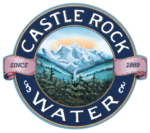Clean drinking water is essential to life. In the United States, and in other western countries, we take for granted that our water is always clean and fresh. Recent news has proven otherwise, which has resulted in more people investing in at-home reverse osmosis water filtration.
The claims are that reverse osmosis produces a perfectly pure drinking water, but is it as safe as people think?
Reverse osmosis essentially strips water of everything, good and bad. That means that beneficial minerals in water are also removed.
According to a research study published by the World Health Organization and conducted by the National Institute of Public Health in the Czech Republic, reverse osmosis water can have direct effects on the intestinal mucous membrane, metabolism, and mineral homeostasis or other body functions.
Low-mineral water can also mean reduced intake of calcium and magnesium, in addition to other essential elements and microelements. Those losses can also transfer to food prepared with reverse osmosis water.
Since reverse osmosis water is stripped of all dissolved solids, it is more likely to leech chemicals from whatever it touches. That means toxic metals from pipes could potentially end up in the body.
The study concludes by saying,
Demineralised water that has not been remineralized, or low-mineral content water – in the light of the absence or substantial lack of essential minerals in it – is not considered ideal drinking water, and therefore, its regular consumption may not be providing adequate levels of some beneficial nutrients.
In future blog posts, we’ll look at the specific effects of reverse osmosis water on the body. In the meantime, people are better off drinking water that has natural minerals and beneficial elements that hasn’t been purified or treated in any way. Look for natural spring water, bottled in glass, that comes from mountain glaciers and is filtered naturally before being bottled.

